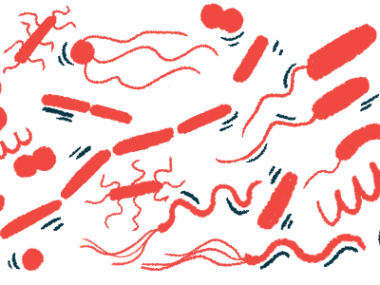Kaftrio seen to ease bronchiectasis on sensitive MRI scans
Radiation-free MRI tool can help monitor changes in lung structures: Study
Written by |

An MRI technique revealed signs of reversible bronchiectasis (widened and inflamed airways) in more than one in three people with cystic fibrosis (CF) being treated with Kaftrio, sold as Trikafta in the U.S., as part of a small one-year study in France.
The technique, called ultrashort echo-time MRI, is radiation-free and generally accepted as a sensitive tool to monitor changes in lung structures, including some early ones that may lead to a diagnosis of CF.
The study, “Longitudinal Evaluation of Bronchial Changes in Cystic Fibrosis Patients Undergoing Elexacaftor/Tezacaftor/Ivacaftor Therapy Using Lung MRI With Ultrashort Echo-Times,” was published in the Journal of Magnetic Resonance Imaging.
Bronchiectasis characterized by widening, inflammation of larger airways
CF causes abnormally thick mucus to build up in the lungs, where it blocks the airways, making it difficult to breathe and clear away infections. Bronchiectasis is characterized by the abnormal widening and inflammation of the bronchi, which are the larger airways in the lungs. This leads to the accumulation of mucus and bacterial infections in these airways. Over time, the walls of the bronchi become thickened, and the normal cilia (hair-like structures that help move mucus) are damaged, impairing the clearance of mucus and bacteria from the lungs.
While changes leading up to bronchiectasis are most often permanent and cannot be reversed, it is possible that the widened airways return to their normal size or at least become narrower. However, these changes may not be visible using standard imaging techniques.
Now, a team of researchers in France sought to use ultrashort echo-time MRI, which is an imaging technique that helps capture clear pictures of structures in the body that are usually hard to see with regular MRI, to monitor a series of changes in lung structures, including bronchiectasis, over one year of treatment with Kaftrio, a CFTR modulator.
Kaftrio, a combination of elexacaftor/tezacaftor/ivacaftor, is approved for use in people who have at least one F508del mutation, which is the most common CF-causing mutation, to improve lung function and nutritional status.
The study included 50 people with CF, ages 12 to 47 years, all of whom “were in a period of disease stability” at baseline, or the study’s start. All had at least one F508del mutation, and 33 (66%) had previously been treated with Orkambi (lumacaftor/ivacaftor).
After one year of treatment with Kaftrio, “there was a significant reduction in the main hallmarks of CF,” the researchers wrote. These included reductions in abnormal thickening of the bronchi, mucus plugging, and bronchiectasis.
The Bhalla scoring system was used to evaluate the severity of lung disease based on various hallmarks of CF. The total range for the Bhalla score is from 3 to 25, with a lower score indicating more severe radiological bronchiectasis.
At baseline, the average Bhalla score was 12.8 points, increasing significantly to an average of 15.2 points after one year of treatment. At the same time, the average predicted forced expiratory volume in one second (FEV1), a measure of lung function, improved from 70% to 87%.
In 18 patients, ultrashort echo-time MRI revealed narrower bronchi, indicating reversible bronchiectasis. Overall, there was a reduction in the severity and number of lung segments affected by bronchiectasis.
Patients with reversible bronchiectasis were younger (mean 20.9 vs. 26.2 years) and had higher predicted FEV1 (mean 82.2% vs. 65.4%) and Bhalla scores (mean 14 vs. 12.2 points), indicating less severe lung disease compared with patients without reversible bronchiectasis.
They also “had significantly lower level of wall thickening and severity in bronchial dilatation, but not in bronchiectasis extent,” the researchers wrote.
Ultrashort echo-time MRI scores matched CT scores but without radiation
All images were scored by three independent researchers, and their reliability (or how well they agreed with each other) in scoring disease severity was excellent. Ultrashort echo-time MRI scores matched those of computed tomography, the imaging standard, which however exposes patients to radiation.
The findings suggests ultrashort echo-time MRI “can be used reproducibly and longitudinally [over time] to assess variations in the disease severity of children and adults with CF, in a radiation-free manner,” the researchers concluded.
“In addition, [ultrashort echo-time] MRI provided evidence that bronchiectasis is potentially reversible in CF” undergoing treatment with Kaftrio, they noted.







